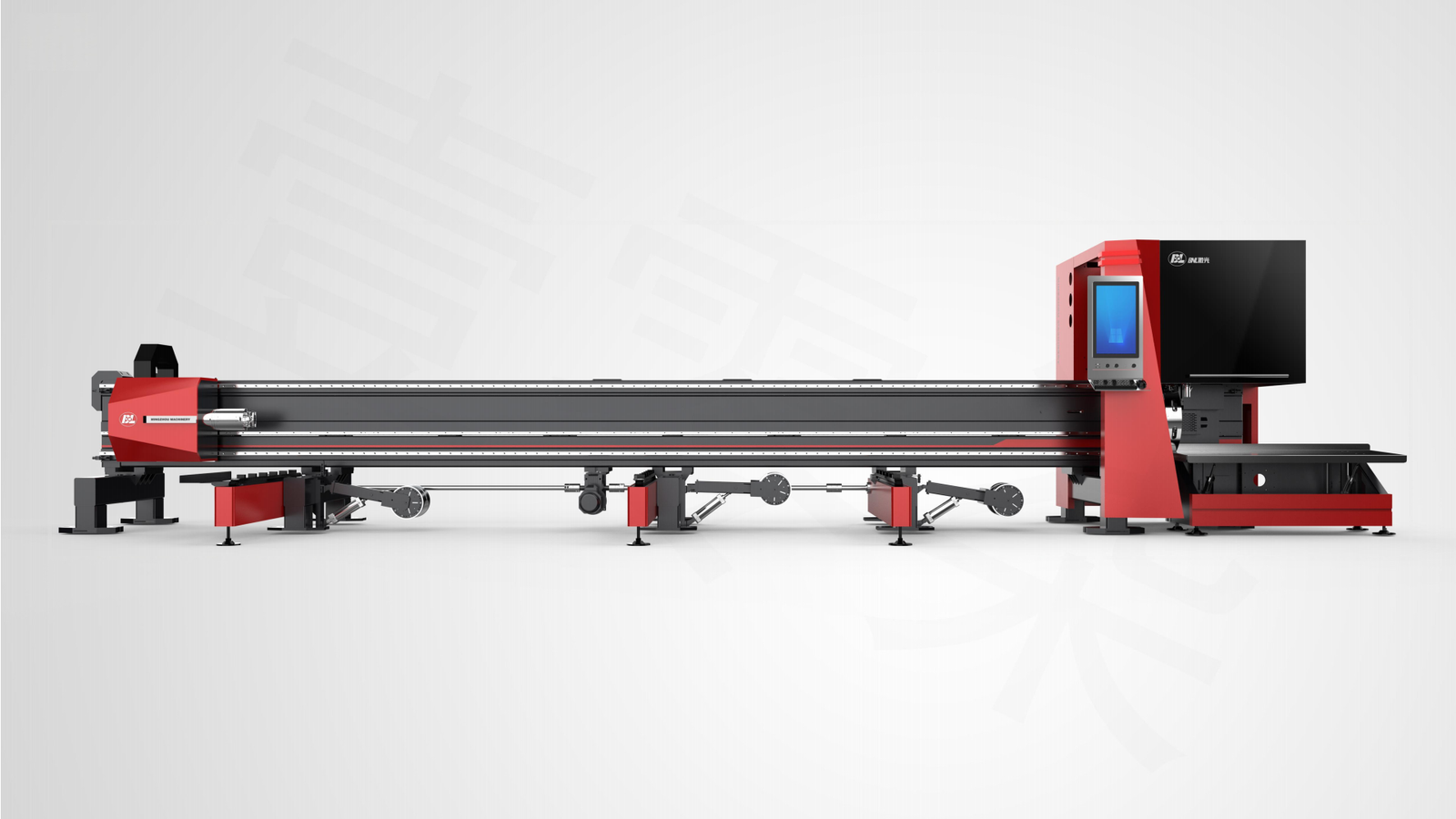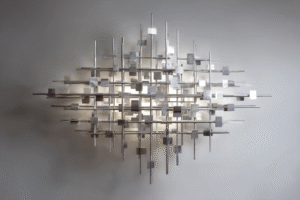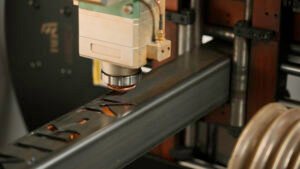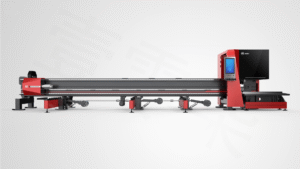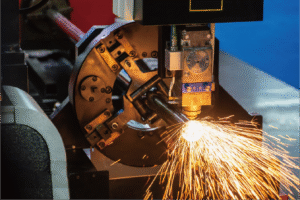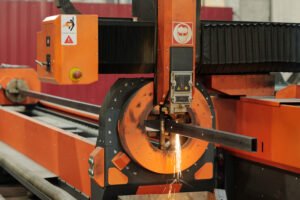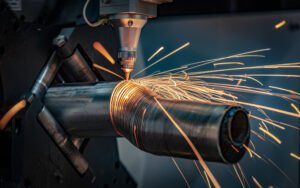Key Technologies Behind Modern Metal Tube Cutting Machines
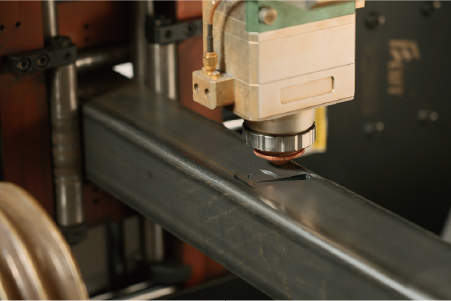
Traditional tube cutting methods often lead to slow output, inconsistent quality, and excessive material waste. Are you struggling with outdated equipment that hinders your production efficiency and increases your operational costs? Discover how the latest advancements in metal tube cutting technology1 are revolutionizing precision, speed, and automation in the industry.
Modern metal tube cutting machines integrate advanced laser technology, automated feeding systems, and intelligent control software to enhance precision, speed, and efficiency. These innovations overcome traditional limitations, offering features like automatic material handling, real-time adjustments, and reduced material waste, significantly optimizing manufacturing processes across various industries.
As someone deeply involved in manufacturing, I understand the constant push to innovate and optimize. The landscape of metal fabrication is evolving rapidly, and staying competitive means embracing the tools that deliver superior results. Let's explore how these cutting-edge technologies are reshaping the industry, driving down costs, and opening new avenues for product design and production.
In my 25 years in metal fabrication, I’ve witnessed a profound transformation, moving from manual, labor-intensive processes to highly automated and precise operations. This shift isn't merely about adopting new machines; it’s a fundamental change in how we approach production, efficiency, and material utilization. Consider a case like Ahmed Al-Farsi, a visionary owner of a mid-sized metal fabrication business in the UAE. His quest for automated solutions to upgrade production efficiency highlights a universal industry demand. Traditional methods, burdened by slow setup times and high skilled labor requirements, are no longer sustainable for businesses aiming for growth and competitive advantage. Modern tube cutting machines, like those we develop at MZBNL, leverage sophisticated optics, powerful lasers, and integrated software to ensure unparalleled accuracy and speed. Research data from industry reports consistently show that companies adopting such technologies experience a significant reduction in production bottlenecks and an impressive increase in output quality and quantity. For example, a recent study by the Global Metal Processing Industry Association indicated that companies upgrading to automated laser cutting systems saw an average of 30% reduction in processing time per unit and a 15% decrease in material waste within the first year of implementation. This isn't just about cutting metal; it's about redefining operational excellence and empowering businesses to deliver more value with less effort.
What is the historical development background of metal tube cutting machines?
Remember the days when metal tube cutting relied on manual sawing, grinding, and punching, leading to slow output and inconsistent quality? Such traditional methods were not only labor-intensive but also costly due to high material waste and the need for skilled operators. Tracing the evolution reveals a remarkable journey from these rudimentary tools to today’s advanced automated systems.
The history of metal tube cutting machines spans from basic manual saws and mechanical presses to advanced laser and CNC technologies. This evolution has been driven by the need for greater precision, speed, and automation, transforming industries from basic manufacturing to high-tech automotive and aerospace applications, significantly reducing manual labor and improving output quality.
To truly appreciate the power of today's technology, it's crucial to understand where we came from. My journey in metal fabrication began over two decades ago, a time when manual processes were the norm. I recall the challenges of achieving consistent quality and the sheer physical effort required. The painstaking process of measuring, marking, cutting, and deburring, often involving multiple machines and operators, was the standard. This history isn't just a nostalgic look back; it's a testament to the relentless innovation that has propelled our industry forward. It highlights the fundamental shifts from brute force to precision, from human error to automated accuracy, and from fragmented workflows to integrated solutions. Understanding this evolution helps us grasp the profound impact modern machines have on efficiency, cost-effectiveness, and the very possibilities of design and production.
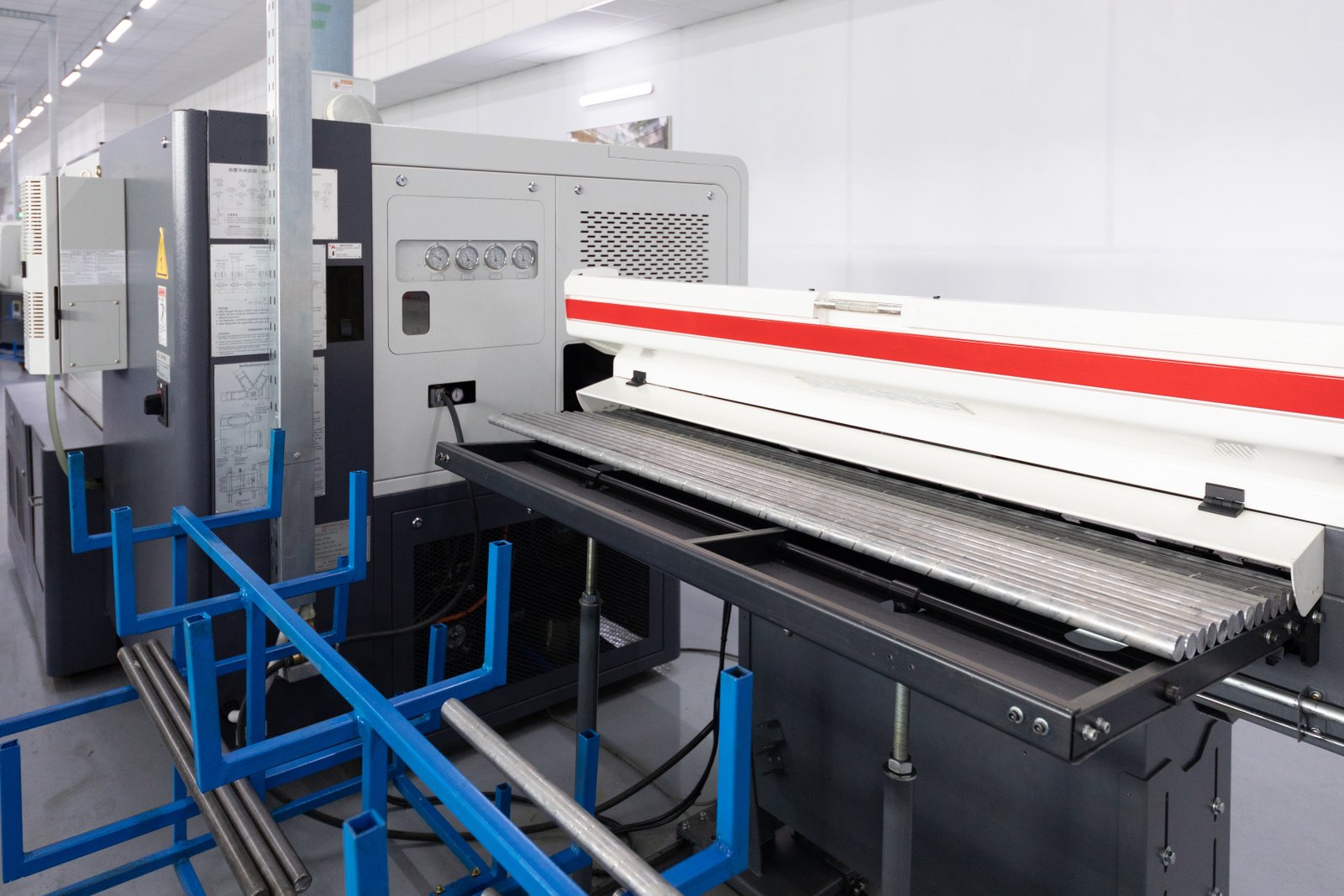
The evolution of metal tube cutting machines can be segmented into distinct eras, each marked by significant technological breakthroughs that progressively automated and refined the process. From the earliest days of manual hacksaws and abrasive cutting to the advent of sophisticated laser systems, the driving force has always been the quest for greater efficiency, precision, and cost-effectiveness.
Early Mechanical Methods and Their Limitations
In the nascent stages of metal tube fabrication, processes were largely manual and heavily reliant on the skill of individual operators. Cutting was performed using hand tools like hacksaws or simple power tools such as band saws and abrasive cutting wheels. Shaping and hole punching were typically done with mechanical presses or drills. These methods, while foundational, presented numerous challenges.
Consider the precision limitations: achieving consistent, accurate cuts for large production runs was nearly impossible. Material waste was high due to imprecise cuts and the need for significant deburring and finishing. Furthermore, the processes were inherently slow, demanding considerable physical labor and extended lead times. For example, preparing a batch of tubes for complex assemblies would involve multiple setup changes and manual transfers between different machines, each step introducing potential errors and delays. A mid-sized business like Ahmed Al-Farsi's, planning to automate existing manual workflows, would undoubtedly struggle with the bottleneck created by such traditional methods, unable to meet the high-volume and high-precision demands of modern architectural or automotive projects. The lack of automation meant higher operational costs, primarily driven by labor and the inability to scale production efficiently.
The Rise of CNC and Plasma Cutting
The mid-20th century heralded a new era with the introduction of Computer Numerical Control (CNC) technology. This marked a pivotal shift from manual control to automated, programmed operations. Early CNC machines, though rudimentary by today's standards, offered unprecedented levels of repeatability and precision. Concurrently, thermal cutting methods like plasma cutting emerged, providing faster cutting speeds for thicker materials compared to mechanical methods.
Plasma cutting utilizes an accelerated jet of hot plasma to cut through electrically conductive materials. While a significant improvement in speed and versatility, especially for larger diameter tubes, plasma cutting still had its limitations regarding cut quality and heat-affected zones (HAZ), often requiring secondary finishing operations. The integration of CNC with plasma cutters allowed for complex shapes and intricate cuts to be programmed directly, reducing human error and improving throughput. This period laid the groundwork for true automation, moving away from single-purpose machines towards more integrated solutions. However, the precision needed for intricate components, such as those in vehicle parts or medical equipment, remained a challenge, driving the industry towards even more refined technologies.
The Laser Revolution and Integrated Systems
The late 20th and early 21st centuries witnessed the widespread adoption of laser cutting technology, which revolutionized the metal tube cutting industry. Laser cutting offers unparalleled precision, minimal HAZ, and the ability to cut complex geometries with exceptional speed. Early CO2 lasers were powerful, but the advent of fiber lasers provided even greater efficiency, lower maintenance, and the ability to cut reflective materials like copper and brass with ease.
The true paradigm shift, however, came with the integration of multi-axis laser cutting heads and sophisticated software platforms. This allowed for intricate 3D cutting on tubes, eliminating the need for separate punching, drilling, or notching operations. For MZBNL, our No-CAD System innovation perfectly exemplifies this evolution. Where operators traditionally spent 15 days in factory training and had to return to a design office for every modification, our system now allows standard tube types and hole patterns to be processed by simply entering parameters. This reduces training to just 1 day on-site, a tangible benefit for companies like Ahmed's that face high operator turnover and retraining burdens. Similarly, our Front-Feeding Innovation, which increases feeding efficiency by 40% and reduces operator labor intensity, addresses the core pain points of traditional manual loading. The Zero-Waste Tail Material Innovation, by optimizing cutting logic from the rear chuck, maximizes material utilization – a critical factor for businesses looking to reduce operational costs and boost cutting efficiency. These advancements collectively transform the metal tube cutting process into a highly automated, precise, and cost-effective operation, enabling complex designs and high-volume production previously unattainable.
| Feature Area | Early Mechanical Methods | CNC + Plasma Cutting | Laser Cutting & Integrated Systems (e.g., MZBNL) |
|---|---|---|---|
| Precision | Low | Moderate | Very High (Micron level) |
| Speed | Very Low | Moderate to High | Very High |
| Automation Level | Manual | Semi-Automated | Fully Automated, Smart |
| Material Waste | High | Moderate | Low (Zero-Waste Tail Material) |
| Setup Time | High (manual changes) | Moderate (programming) | Very Low (No-CAD system) |
| Skilled Labor Need | Very High | High | Moderate (reduced by user-friendly interfaces) |
| Versatility | Low | Moderate | High (Multi-process integration) |
Laser cutting reduces material wasteTrue
Modern laser cutting systems optimize material usage through precision cutting paths and zero-waste tail material innovations.
Plasma cutting requires no finishingFalse
Plasma cutting often leaves heat-affected zones and rough edges that require secondary finishing operations.
How have current technologies transformed the metal tube cutting industry?
Are you still wrestling with inefficient tube cutting methods, limited by slow speeds and a lack of precision? The industry is no longer bound by these constraints; traditional challenges are now opportunities for unprecedented efficiency. Today's advanced technologies are radically reshaping metal tube fabrication, offering transformative improvements in every aspect of production.
Current technologies, especially advanced laser cutting machines with integrated automation and smart software, have revolutionized the metal tube cutting industry. They offer unparalleled precision, high-speed processing, and significant reductions in material waste and labor costs, enabling manufacturers to produce complex geometries with greater efficiency and consistency.
In my discussions with clients like Ahmed Al-Farsi, the desire for transformative change is palpable. He's actively seeking automated solutions to upgrade his production efficiency, specifically a laser tube cutting machine with automatic feeding and punching capabilities2. This perfectly illustrates how current technologies aren't just incremental improvements; they are fundamental shifts that redefine what's possible in metal fabrication. No longer are businesses confined to simple cuts and shapes; intricate designs, once deemed impossible or prohibitively expensive, are now achievable with speed and precision. These advancements streamline workflows, minimize human error, and unlock new avenues for product innovation and market competitiveness. From intelligent automation that handles material loading to sophisticated software that optimizes every cut, the modern metal tube cutting machine is a testament to how technology empowers businesses to achieve peak performance and meet evolving market demands.
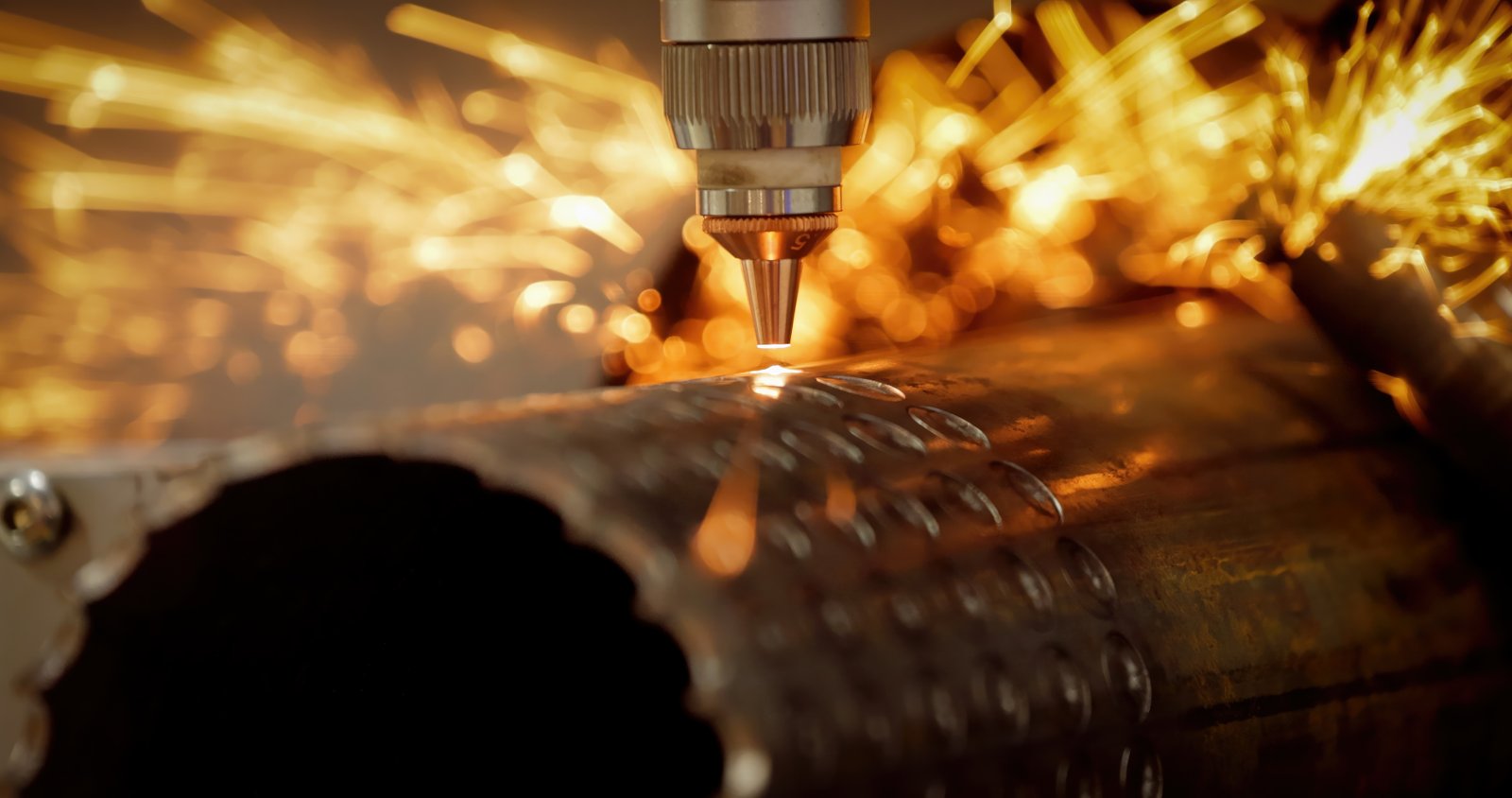
The transformation brought about by current metal tube cutting technologies is multifaceted, touching every aspect of the manufacturing process from design to delivery. These advancements are not merely about faster machines; they encompass intelligent automation, sophisticated software, and a holistic approach to optimizing production workflows.
Automation and Integrated Workflows
The most significant impact of modern technology is the unprecedented level of automation and the integration of multiple processes into a single machine. Traditional manufacturing often required separate machines for cutting, punching, drilling, and deburring, leading to multiple material handling steps, increased labor, and potential for errors at each transfer point. Today, machines like MZBNL’s Automatic Punching & Cutting Integrated Machine3 combine these functions seamlessly.
This integration means that a single machine can load a raw tube, perform high-speed laser cutting, precise punching, and even marking, all in one continuous operation. For a client like Ahmed, who seeks turnkey solutions that are easy to install and operate, this capability is invaluable. It drastically reduces setup times and eliminates the need for separate fixtures and re-calibrations. Our Front-Feeding Innovation, for instance, automates the loading process, boosting efficiency by approximately 40% and cutting operator labor intensity by a similar margin. This isn’t just a theoretical benefit; in a real-world scenario, this translates to tangible cost savings on labor and a substantial increase in daily output. Automation also mitigates the pain point of operator turnover, as the machines require less constant, highly skilled manual intervention. The entire workflow becomes more predictable, consistent, and scalable, allowing businesses to take on larger, more complex projects with confidence.
Precision, Speed, and Material Optimization
Modern laser cutting technology has pushed the boundaries of precision and speed to levels previously unimaginable. Fiber lasers, in particular, offer superior beam quality, enabling intricate cuts, small hole drilling, and complex contours with exceptional accuracy. This precision is critical for industries like automotive and medical equipment manufacturing, where tolerances are extremely tight.
Alongside precision, speed has been dramatically enhanced. High-power fiber lasers can cut through various metal thicknesses at remarkable speeds, significantly reducing cycle times. For example, a standard 6kW fiber laser can cut 2mm mild steel at over 30 meters per minute, a feat unattainable with older technologies. This speed directly translates to increased throughput and shorter lead times, a key concern for Ahmed who faced long machine lead times with previous suppliers. Furthermore, innovations in software and cutting logic have led to significant material optimization. Our Zero-Waste Tail Material Innovation, by calculating cuts from the rear chuck as the origin, minimizes leftover material. This is not a minor improvement; for a business consuming tons of raw material annually, even a few percentage points of waste reduction can result in substantial cost savings. Combined with dynamic nesting software that optimizes part layout on the tube, these technologies ensure maximum material utilization, reducing both environmental impact and operational expenses.
Smart and Digitalized Systems
The true transformation also lies in the intelligence embedded within these machines. Modern metal tube cutting systems are equipped with smart sensors, real-time monitoring capabilities, and intuitive digital interfaces. These "smart" features allow for predictive maintenance, remote diagnostics, and on-the-fly adjustments, ensuring continuous operation and minimizing downtime.
At MZBNL, our No-CAD Operating System is a prime example of digitalization simplifying complex processes. Instead of creating intricate 3D drawings for every part, operators can simply input parameters for standard tube types and hole patterns. This not only dramatically shortens setup time but also lowers the skill threshold for machine operation, directly addressing Ahmed's pain point regarding the need for skilled CAD operators and high operator turnover. These smart systems can also collect vast amounts of production data, offering insights into efficiency, material consumption, and machine performance. This data-driven approach empowers manufacturers to make informed decisions, identify bottlenecks, and continuously refine their operations. For Ahmed, who prioritizes suppliers with proven technology and global references, the digitalized and easy-to-operate nature of these machines is a compelling factor, promising a turnkey solution with minimal learning curve and maximum productivity. The integration of IoT and cloud connectivity further enhances these systems, enabling remote support and continuous software updates, ensuring the machines remain at the forefront of technological capability.
Modern machines integrate multiple processesTrue
Today's advanced machines combine cutting, punching, drilling and marking into one continuous operation, eliminating separate handling steps.
Fiber lasers can't cut thick metalsFalse
High-power fiber lasers can efficiently cut through various metal thicknesses, with 6kW lasers cutting 2mm steel at 30+ meters/minute.
What challenges do modern metal tube cutting machines face in the industry today?
Despite incredible advancements, the metal tube cutting industry isn't without its hurdles, from complex material handling to evolving precision demands. Are you finding it difficult to keep pace with the rapid technological shifts while also managing operational costs and skilled labor shortages? Understanding these contemporary challenges is the first step towards innovating and deploying effective, future-proof solutions.
Modern metal tube cutting machines face challenges including the high initial investment cost, the need for specialized operator training, and the complexity of integrating these advanced systems into existing workflows. Additionally, managing diverse material types, ensuring consistent part quality, and addressing rapid technological obsolescence pose ongoing difficulties for manufacturers.
The path to innovation is rarely without its bumps. While we at MZBNL are proud of our advancements like the No-CAD system and zero-waste cutting, I frequently encounter industry leaders, much like Ahmed Al-Farsi, who are eager to embrace new technology but also acutely aware of the practical challenges involved. Ahmed, with his engineering background, understands the value of sophisticated machinery but also grapples with the realities of implementing it in a 100+ staff operation. The complexities range from the initial financial outlay for cutting-edge equipment to ensuring the existing workforce can adapt to new digital interfaces. Moreover, the global market demands not just speed and precision, but also the flexibility to process an ever-widening array of materials and intricate designs, all while navigating a competitive landscape where after-sales service and long-term support are paramount. Addressing these hurdles isn't about shying away from progress; it's about strategizing smart solutions that ensure widespread adoption and sustained success.
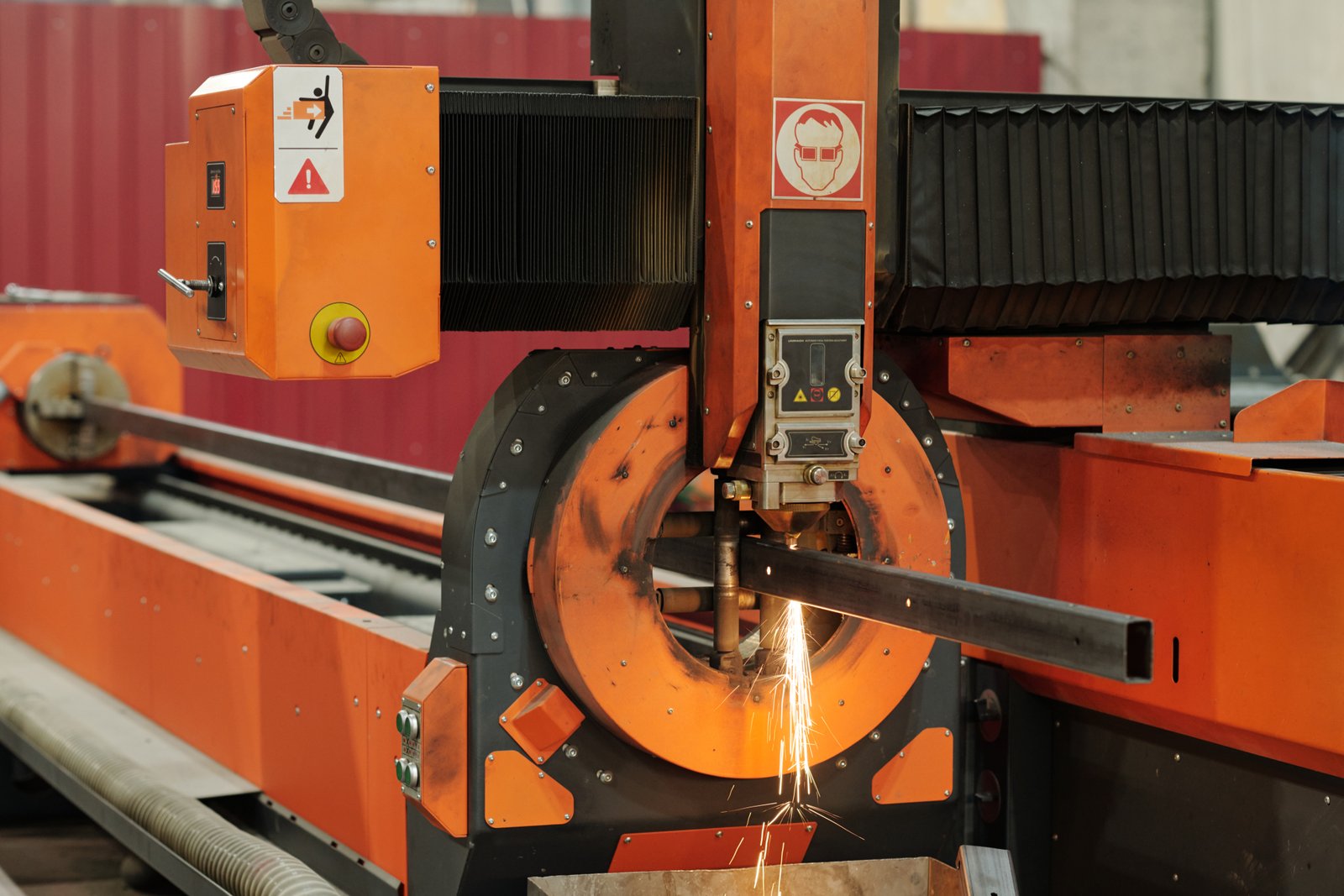
Even with the remarkable progress in metal tube cutting technology, the industry faces several significant challenges that require ongoing innovation and strategic solutions. These challenges often stem from the very sophistication of the machines, the dynamic nature of market demands, and the practicalities of implementation within diverse manufacturing environments.
High Initial Investment and ROI Justification
One of the most prominent challenges for businesses looking to upgrade to modern laser tube cutting machines is the substantial initial capital investment. Cutting-edge technology, with its advanced laser sources4, multi-axis capabilities, and integrated automation, comes at a premium. For a mid-sized business owner like Ahmed Al-Farsi, while he values high cost-performance ratio over low price, the decision to invest in a machine with automatic feeding and punching capabilities requires a clear and compelling justification for the return on investment (ROI).
This isn't simply about the purchase price; it also includes installation costs, necessary infrastructure upgrades (power, ventilation), and initial training expenses. Businesses need to meticulously calculate how quickly these machines will deliver cost savings through reduced labor, lower material waste, increased throughput, and improved part quality. While data from MZBNL's client base shows our machines increase feeding efficiency by 40% and reduce labor intensity by 40%, translating directly into higher output and lower operational costs, effectively communicating this long-term value against the immediate financial outlay is crucial. The challenge lies in helping potential clients bridge the gap between the upfront cost and the sustained, long-term benefits, especially when competing against lower-cost, albeit less efficient, traditional options from other sourcing locations like Turkey or some parts of China.
Skilled Operator Shortage and Training
Despite advancements in user-friendly interfaces, modern metal tube cutting machines still require a certain level of technical proficiency to operate, troubleshoot, and maintain effectively. The global manufacturing sector faces a persistent shortage of skilled labor, and finding operators who can fully leverage the sophisticated features of advanced laser cutting systems is a significant hurdle.
Ahmed's pain point regarding "previous machines required skilled CAD operators" and "high operator turnover caused retraining burdens" perfectly encapsulates this challenge. While MZBNL's No-CAD Operating System dramatically reduces the skill threshold by allowing operators to be trained in just 1 day on-site, compared to 15 days at the factory, the need for continued technical support, maintenance engineers, and advanced programming knowledge remains. Businesses need robust training programs and ongoing support to ensure their workforce can adapt to new technologies and maximize machine uptime. Without adequate training and accessible technical assistance (such as remote diagnostics or local agent presence), the full potential of these high-tech machines may not be realized, leading to underutilization and frustration. The reliance on complex software and intricate mechanical systems means that even minor issues can halt production if in-house expertise is lacking or external support is unresponsive.
Material Versatility and Complex Geometries
Modern industries demand an ever-wider array of materials and increasingly complex part geometries. While today's laser cutting machines are highly versatile, effectively cutting different metal types (e.g., stainless steel, aluminum, copper, brass5) and varying wall thicknesses, each material presents unique challenges in terms of laser parameters, gas pressures, and cutting speeds.
The push for lightweighting in industries like automotive and aerospace often involves using new alloys that can be difficult to cut, leading to quality issues or slower processing. Moreover, the complexity of designs – multi-angled cuts, nested parts, and intricate perforations – requires sophisticated programming and advanced machine capabilities. While our machines excel at multi-process integration and high-precision cutting, optimizing parameters for every new material or complex design iteration can be time-consuming and require extensive testing. For a company involved in architectural metalwork and vehicle parts supply, like Ahmed's, the ability to consistently achieve high-quality cuts on diverse materials and complex designs is non-negotiable. The challenge is ensuring the machine can perform optimally across this spectrum without excessive manual adjustments or specialized tooling, maintaining both efficiency and part quality. This also includes managing the scrap generated from these varied processes, even with zero-waste systems, as different materials require different disposal or recycling methods.
High initial investment is a key challengeTrue
Modern metal tube cutting machines require substantial upfront costs including equipment, installation, and training expenses.
Basic operators can use advanced machines easilyFalse
Even with user-friendly interfaces, modern machines still require technical proficiency for optimal operation and maintenance.
What strategic solutions can address the challenges in metal tube cutting technology?
Facing the challenges of high investment, skilled labor shortages, and complex material processing can be daunting for any metal fabrication business. Are these hurdles preventing you from fully leveraging the power of modern tube cutting, impacting your competitiveness and growth? Strategic solutions focusing on smart integration, enhanced support, and flexible automation can decisively overcome these obstacles.
Strategic solutions for metal tube cutting challenges include developing user-friendly No-CAD systems to mitigate skill shortages, offering flexible financing to ease investment burdens, and prioritizing comprehensive after-sales support. Additionally, fostering modular machine designs and promoting integration with existing smart factory ecosystems are crucial for widespread adoption and efficiency gains.
Having identified the critical challenges facing the metal tube cutting industry, the natural next step is to explore actionable, strategic solutions. As someone who has spent 25 years in this field, building a high-tech enterprise like MZBNL with over 30 patents and 4000+ global clients, I understand that innovation isn't just about creating powerful machines; it's about making them accessible, manageable, and profitable for our diverse clientele. My conversations with discerning clients like Ahmed Al-Farsi, who prioritize turnkey solutions and robust after-sales support, consistently reinforce the need for a holistic approach. It’s not enough to offer cutting-edge technology; we must also provide the ecosystem that ensures its successful implementation and long-term viability. This means focusing on user experience, comprehensive support, and flexible business models that align with our clients' evolving needs and investment capacities.
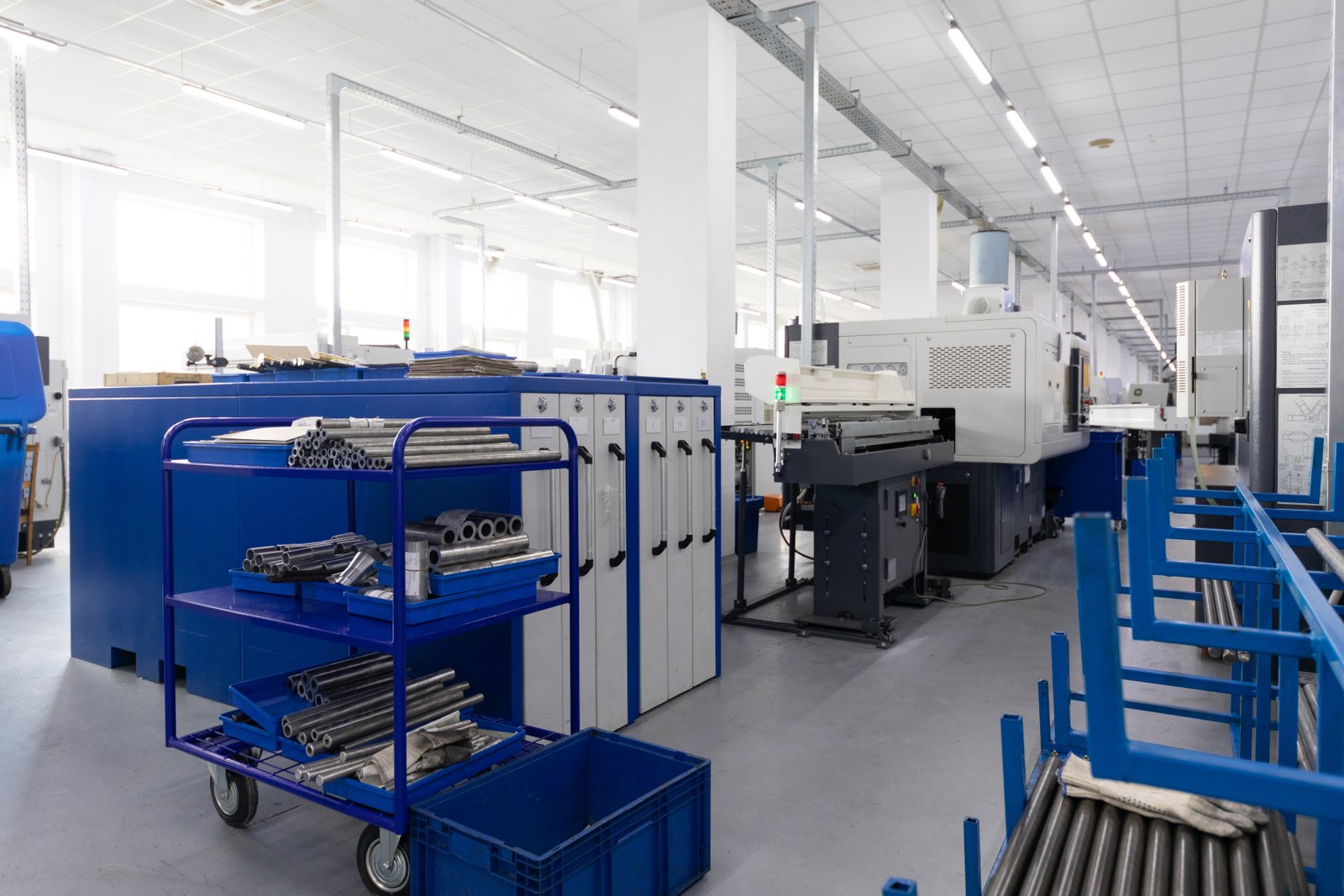
Addressing the contemporary challenges in metal tube cutting technology requires a multifaceted strategic approach that goes beyond mere hardware improvements. It involves a strong focus on user experience, comprehensive support infrastructure, flexible business models, and forward-thinking integration strategies.
Enhancing User Experience and Skill Accessibility
One of the most critical strategies is to make advanced metal tube cutting machines more accessible to a wider range of operators, thereby mitigating the skilled labor shortage. This involves significant investment in human-machine interface (HMI) design6 and intelligent software.
At MZBNL, our No-CAD Operating System is a prime example of this strategy in action. By allowing operators to process standard tube types and hole patterns simply by entering parameters, we've dramatically reduced the need for complex 3D CAD drawing skills. This innovation shortens setup time and lowers the skill threshold, directly addressing Ahmed's pain point of needing skilled CAD operators and coping with high operator turnover. Training time is cut from 15 days at the factory to just 1 day on-site, making it easier for businesses to onboard new staff quickly and efficiently. Furthermore, incorporating intuitive, graphical interfaces with step-by-step guidance and built-in troubleshooting features empowers less experienced operators to confidently manage the machine. This approach not only broadens the pool of potential operators but also reduces training costs and increases overall operational flexibility, ensuring that even during periods of high staff turnover, production efficiency is maintained. Continuous software updates that streamline operations and add new user-friendly features are also vital in this regard, ensuring the machines remain simple to operate despite their underlying complexity.
Comprehensive After-Sales Support and Training Infrastructure
To justify the high initial investment and ensure long-term ROI, manufacturers must provide robust and accessible after-sales support, coupled with extensive training programs. This directly addresses client concerns about service reliability and expertise.
For clients like Ahmed, who specifically mentions "after-sales service and training support" and "spare parts availability and remote diagnostics" as key sourcing points, a supplier's commitment to post-purchase assistance is paramount. MZBNL's strategy includes establishing global distributor networks and ensuring spare parts availability in key export regions like Southeast Asia, the Middle East, Europe, and North America. This local presence is crucial for prompt service and reduced downtime. Offering comprehensive training, both initial on-site training and ongoing online modules or workshops, ensures that clients can maximize the machine's capabilities and maintain it effectively. Remote diagnostics, powered by IoT connectivity, allow our engineers to troubleshoot issues from afar, minimizing service call times and keeping the machines running. Furthermore, offering regular maintenance contracts and performance optimization services ensures machines operate at peak efficiency throughout their lifespan, protecting the client's investment and building a long-term partnership based on trust and reliability. This proactive support model fosters client confidence and transforms a significant capital expenditure into a reliable, high-performing asset.
Flexible Business Models and Integration Capabilities
To address the challenge of high initial investment and to promote broader adoption, manufacturers should explore flexible business models beyond outright purchase. This includes options such as leasing, financing partnerships, or even pay-per-use models for smaller clients.
Additionally, ensuring that modern machines can seamlessly integrate into existing factory ecosystems and future smart manufacturing (Industry 4.0) frameworks7 is vital. This means machines should have open architectures, standardized communication protocols (like OPC UA or MTConnect), and robust data export capabilities. For Ahmed, who is "planning to automate existing manual workflows" and is "interested in becoming a regional distributor," the ability to integrate the machine into his broader automation strategy is a key differentiator. MZBNL designs its systems to be "smart and digitalized," meaning they can connect with factory-wide ERP or MES systems for real-time production monitoring and data analysis. This allows businesses to optimize their entire production chain, not just the cutting process. Data collected from machines can inform inventory management, scheduling, and quality control, leading to holistic efficiency gains. Furthermore, offering customized solutions, as MZBNL does, ensures that clients receive machines tailored to their specific needs and production environments, providing a high cost-performance ratio and maximizing their investment. This strategic flexibility in both sales and integration is essential for widespread industry adoption and building resilient supply chains.
No-CAD systems reduce training timeTrue
The article states that No-CAD systems cut training time from 15 days to just 1 day by eliminating complex CAD requirements.
Remote diagnostics increase downtimeFalse
The text explains that IoT-enabled remote diagnostics actually minimize service call times and reduce machine downtime.
Which technological advancements are recommended for future developments in metal tube cutting?
The metal tube cutting industry is constantly evolving, with new materials and complex designs emerging, challenging current technological limits. Are you prepared to embrace the next wave of innovation, or will your operations be left behind by rapidly advancing capabilities? Future developments in AI, advanced robotics, and sustainable processes promise to unlock unprecedented levels of efficiency, intelligence, and environmental responsibility.
Future developments in metal tube cutting should focus on integrating advanced AI for predictive maintenance and real-time optimization, enhancing robotic automation for material handling, and innovating towards more sustainable and energy-efficient laser technologies. Further progress in multi-material processing and adaptive cutting will also be crucial for industry growth.
As someone at the forefront of metal fabrication technology, constantly driving R&D and innovation at MZBNL8, I find the prospect of future advancements incredibly exciting. We've already pioneered technologies like the No-CAD system and zero-waste cutting, but the horizon offers even more transformative possibilities. For our forward-thinking clients, including those like Ahmed Al-Farsi who are keen on staying ahead, understanding these next-generation capabilities isn't just about curiosity; it's about strategic planning for competitive advantage. The future of metal tube cutting isn't just about faster and more precise machines; it's about intelligent, self-optimizing systems that learn, adapt, and integrate seamlessly into the broader fabric of Industry 5.0. It's about pushing the boundaries of what's possible, not just in terms of production, but in sustainability and operational intelligence.
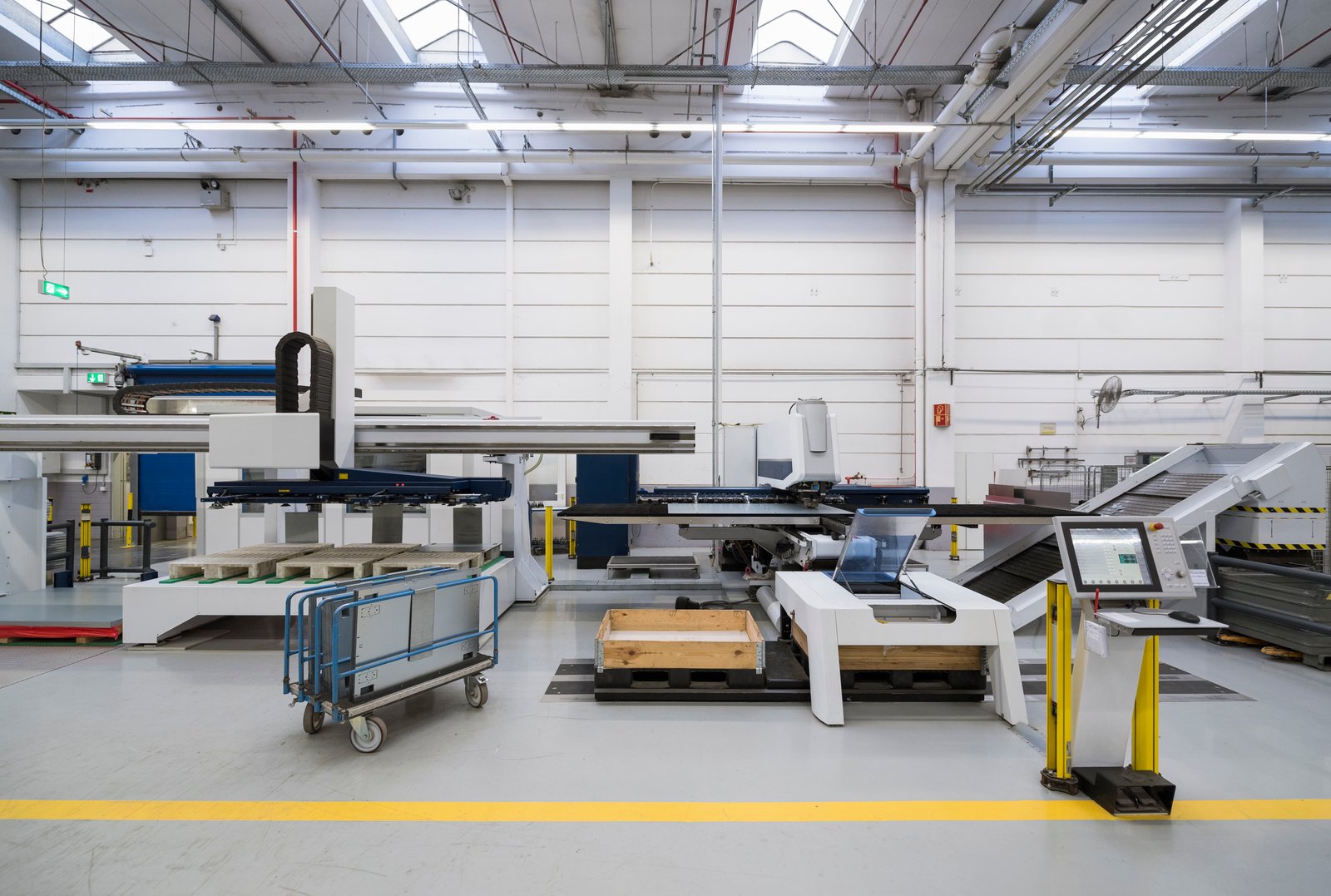
The future of metal tube cutting technology9 is poised for revolutionary advancements, driven by the convergence of artificial intelligence, advanced robotics, sustainable manufacturing practices, and novel material science. These developments promise to elevate efficiency, autonomy, and environmental responsibility to unprecedented levels.
Integration of Artificial Intelligence and Machine Learning
The most transformative future development lies in the deeper integration of Artificial Intelligence (AI) and Machine Learning (ML) into metal tube cutting machines. Currently, smart systems offer real-time monitoring and some degree of automation, but AI will enable machines to become truly self-optimizing and predictive.
Imagine a machine that can analyze vast amounts of production data—from cutting parameters and material properties to wear patterns on consumables—to autonomously adjust settings for optimal performance and predict maintenance needs before failures occur. This predictive maintenance, powered by AI, could drastically reduce unplanned downtime, a major pain point for any production facility. For a business like Ahmed Al-Farsi's, where uptime directly correlates with contract delivery and profitability, this would be invaluable. AI could also enable adaptive cutting, where the machine automatically adjusts laser power, speed, and gas pressure in real-time based on subtle variations in material thickness or composition, ensuring consistent quality across an entire batch. Furthermore, AI-driven nesting algorithms could achieve even higher material utilization than current software, pushing the boundaries of MZBNL's Zero-Waste Tail Material Innovation to new heights. The system could learn from every cut, continuously refining its strategies for efficiency and waste reduction, thereby securing a competitive edge in cost-effectiveness.
Advanced Robotics and Autonomous Material Handling
While current machines feature automatic feeding systems, the future will see more sophisticated robotic integration, leading to fully autonomous material handling and post-processing. This goes beyond simple loading and unloading to encompass intelligent sorting, quality inspection, and seamless transfer to subsequent manufacturing stages.
Consider the potential for collaborative robots (cobots) working alongside human operators, handling delicate or awkwardly shaped tubes, or automating the transfer of finished parts to welding stations or storage. These advancements would further reduce manual labor, enhance workplace ergonomics (building on MZBNL’s Front-Feeding Innovation which already reduced labor intensity by 40%), and eliminate human error in handling. This level of autonomy would be particularly beneficial for manufacturers dealing with high-volume, repetitive tasks or extremely large and heavy tubes, where manual handling poses safety risks and efficiency challenges. Robotic vision systems could inspect cuts for defects in real-time, feeding data back to the AI for immediate process correction, thereby improving overall quality control. Furthermore, autonomous guided vehicles (AGVs) could transport raw materials to the machines and finished parts away, creating a truly lights-out manufacturing environment, significantly increasing throughput and operational flexibility for a 100+ staff operation like Ahmed’s.
Sustainable and Energy-Efficient Technologies
As global focus shifts towards sustainability, future developments in metal tube cutting will heavily emphasize energy efficiency, reduced carbon footprint, and the ability to process recycled materials more effectively. This will involve innovations in laser sources, cooling systems, and waste management.
Research is ongoing into more energy-efficient laser sources that consume less power while maintaining or increasing cutting speeds and quality. This is crucial as energy costs constitute a significant operational expense for manufacturers. Beyond the laser itself, advancements in intelligent power management systems will ensure that every component of the machine operates with minimal energy consumption. Furthermore, the ability to process and re-cut tubes made from recycled metals or to handle a wider range of material compositions without compromising cut quality will be paramount. MZBNL's commitment to maximizing material utilization through our Zero-Waste Tail Material Innovation is a step in this direction, but future machines will push this further by incorporating features that facilitate the processing of mixed or less-than-perfect raw materials. This not only aligns with environmental goals but also offers economic benefits by potentially allowing the use of cheaper, recycled inputs. The integration of advanced filtration systems to capture fumes and particles, and the development of dry cutting technologies to eliminate coolant waste, will also contribute to a greener manufacturing process, appealing to businesses committed to environmental responsibility and potentially opening doors to new markets with stringent green standards.
AI enables predictive maintenanceTrue
AI can analyze data to predict when maintenance is needed, reducing unplanned downtime.
Current machines are fully autonomousFalse
While advanced, current machines still require human intervention and oversight for optimal operation.
Conclusion
Modern metal tube cutting machines have radically transformed manufacturing, moving from manual processes to highly precise, automated, and intelligent systems. By embracing innovations like MZBNL's No-CAD and Zero-Waste solutions, addressing investment hurdles with flexible models, and focusing on future advancements in AI and robotics, the industry is set to achieve unprecedented levels of efficiency and sustainability.
-
Discover innovative mechanisms that minimize material waste in cutting processes. ↩
-
Discover how automatic feeding improves production speed and reduces labor costs. ↩
-
Explore the benefits of integrating multiple processes into a single machine for efficiency. ↩
-
Explore the advantages and innovations of advanced laser sources in cutting efficiency. ↩
-
Learn about the specific challenges and solutions for cutting brass with laser machines. ↩
-
Understand how HMI design enhances operator accessibility and ease of machine use ↩
-
Discover how Industry 4.0 frameworks support integration and smart factory ecosystems ↩
-
Discover pioneering advancements by MZBNL in metal fabrication technology. ↩
-
Explore future advancements in efficiency and sustainability in metal tube cutting. ↩
Have Questions or Need More Information?
Get in touch with us for personalized assistance and expert advice.
